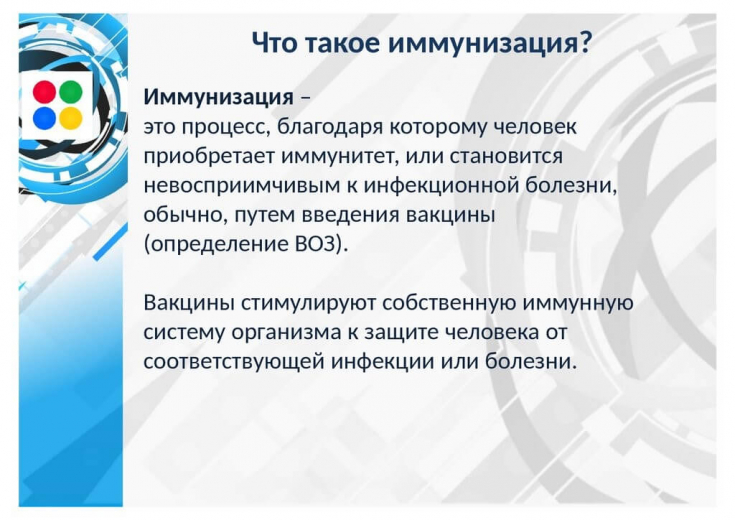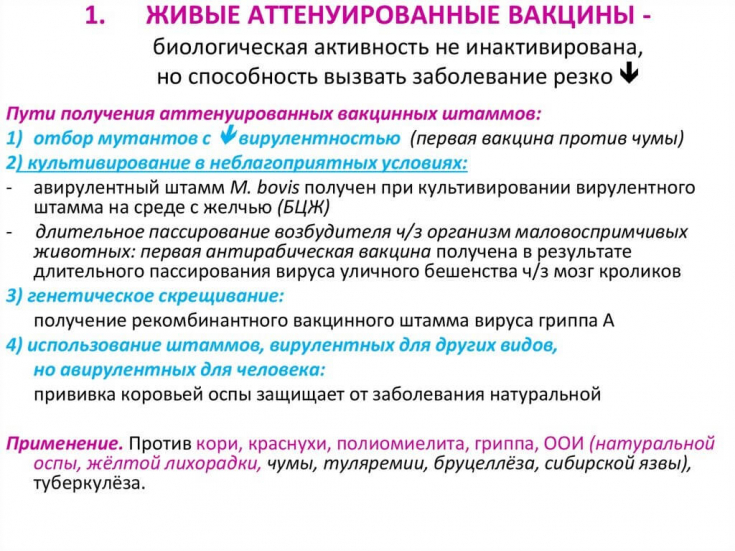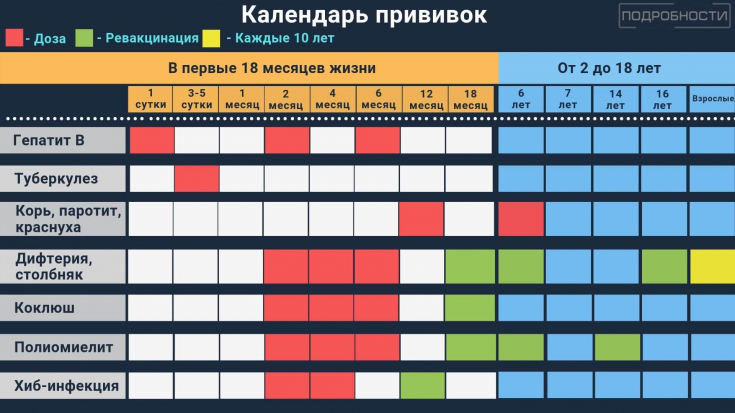Vaccination − the most effective way to prevent the development of infectious diseases. To date, over 25 potentially serious diseases can be prevented through vaccination, including:
- measles;
- tetanus;
- diphtheria;
- poliomyelitis;
- flu;
- meningitis;
- typhoid fever;
- cervical cancer.
Find out in the article on estet-portal.com
what vaccines are available and what factors should be considered before vaccination.
- Classification of preparations for vaccination
- Vaccination: aspects of the formation of immune defense
- What should the vaccination calendar includeii
According to the Centers for Disease Control and Prevention (CDC) definition, − these are drugs that
stimulate the human immune system to form immunity against specific infectious diseases.
Vaccination involves the implementation of active immunization by artificial means, that is,the formation of specific immunity to infectious pathogens/toxins in response to vaccination.
Today, there are suchtypes of vaccines:
1. Live vaccines: contain live attenuated (attenuated, devoid of virulence) strains of bacteria, viruses or rickettsiae, for example:
- tuberculosis vaccine (BCG);
- measles, mumps and rubella (MMR) vaccine;
- oral polio vaccine (OPV);
- Chickenpox vaccine.
At the peak of the season: when is antibiotic therapy needed for pharyngotonsillitis?
2. Inactivated (non-live) vaccines: contain inactivated by physical (temperature, ultraviolet radiation, etc.) or chemical (formaldehyde, alcohol) effects on microorganisms or their individual antigens.
In particular, vaccines containing whole microorganisms are called corpuscular, and vaccines containing split microorganisms, − split vaccines.3. Anatoxins: contain inactivated exotoxins of infectious pathogens, which, during the manufacturing process, lose their toxic properties, but retain their immunogenicity. The use of toxoids contributes to the creation of antitoxic immunity − that is, protection against the toxin, but not against the infectious agent.
Because toxoids have relatively low immunogenicity, adjuvants − substances that increase the immunogenicity of toxoids (for example, aluminum salts). An example of toxoids isdiphtheria, tetanus and pertussis toxoids.

4. Chemical vaccines: contain antigens of microorganisms obtained from them by chemical means. Examples are:
- Hib vaccine (Haemophilus influenzae type b);
- polysaccharide vaccine to prevent meningococcal disease.
5. Recombinant vaccines: contain microbial antigens obtained by genetic engineering. The production of recombinant vaccines involves the introduction of the gene of an infectious agent into the genome of another organism (for example, baker's yeast), followed by the synthesis of the necessary antigenon.
An example of a recombinantvaccine against hepatitis B, rotavirus infection, human papillomavirus infection.
Vaccination: aspects of the formation of immune defenseThe mechanism of formation of immune protection in response to the introduction of a vaccine is similar to that when an infectious agent enters the body. However, unlike the latter, the components of the vaccines are devoid of virulence, and, therefore,
do not cause the development of an infectious disease and its complications.
Live vaccines have the best immunogenicity, since they contain the largest number of antigens, and can also contribute to the formation of not only IgM and IgG, but also secretory IgA − antibodies that are formed in the lymphoid tissue system of the mucous membrane.
Prevention of antibiotic resistance in aesthetic medicine
Immune protection, which is formed in response to the introduction of live vaccines, is longer, usually a single dose is sufficient, while with the use of inactivated vaccines, several doses are necessary to form immune protection.

: they cannot be used for immunization of pregnant women and people with severe immunodeficiencies. Thus, in immunocompromised persons there is a risk of generalization of the infectious process in response to the introduction of a live vaccine.
The generalization of the infectious process due to vaccination in healthy individuals is casuistry, and this is nothingcompared to that in people who have not received the necessary vaccination.
What should the vaccination calendar includeThe immunization calendar contains information about the diseases against which a person should be vaccinated by age. Each country has its own
Vaccination Calendar, which is developed in accordance with the epidemiological situation and economic opportunities.
Note to travelers: Ebola virus

For comparison, in the United States (United States of America), the Immunization Schedule includes vaccinations against 17 infectious diseases, including rotavirus, pneumococcal, meningococcal, hepatitis A, influenza, varicella, and human papillomavirus.
More interesting information on our YouTube channel:







Add a comment